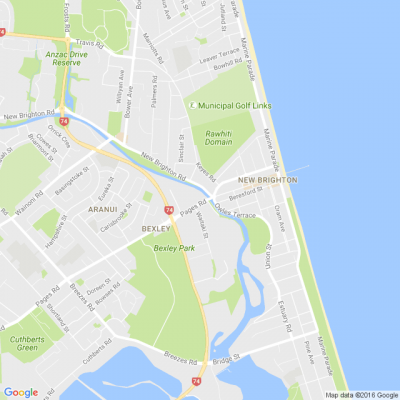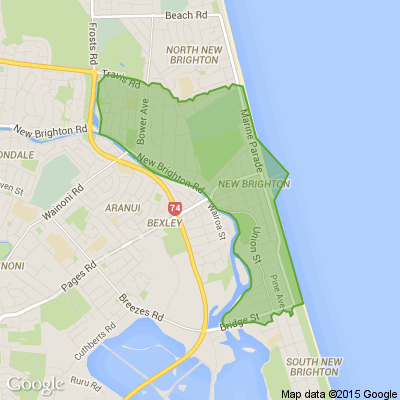
Know what’s happening
Access the private noticeboard for verified neighbours near you. Keep informed about any suspicious activity, send urgent updates to your neighbours when required and discuss emergency planning.
Get to know your neighbours
Browse the directory and start getting to know your neighbours. Don’t want to post to the whole neighbourhood? Send a private message.
Buy, sell and give away
Want to declutter your garage? Buy some used household items? Give away some garden stuff? Become a verified neighbour to browse and post items for sale. Trading is simple when everyone lives nearby.



Thank you for using Neighbourly
You may receive an email confirmation for any offer you selected. The associated companies will contact you directly to activate your requests.
Todd from New Brighton
Hi Brighton
We are looking for a rental home for abot 5 months about June ,
as we are doing a re repair with Eqc
, Yay , have a small ginger cat , 1 bedroom would be fine , would love to stay in the area , Proffecianal couple
Thanks Todd
Bowhill rd
Nicole Mathewson Reporter from The Press
From reporter Tina Law:
KiwiRail is putting communities at risk by causing delays to work on cycleways across Christchurch, a city councillor warns.
The state-owned enterprise tasked with managing the country’s rail network is being blamed by the Christchurch City Council for delays on at least… View moreFrom reporter Tina Law:
KiwiRail is putting communities at risk by causing delays to work on cycleways across Christchurch, a city councillor warns.
The state-owned enterprise tasked with managing the country’s rail network is being blamed by the Christchurch City Council for delays on at least four cycleway projects – all of which were supposed to be fast-tracked thanks to Government shovel-ready funding.
The proposed cycleway routes either cross or run parallel to KiwiRail’s tracks, therefore design changes are needed to make it safer for cyclists.
However, the design work requires approval from KiwiRail, and in many cases these have not been forthcoming or KiwiRail and the council disagree about the level of work that is required. Read the full story here.

The Team from Resene ColorShop Shirley
Choose pretty patterned paper to make découpage eggs, then wrap them in bunny ear napkins to create a gorgeous table setting. Get creative with your Resene paint colours.
Find out how to create your own.

Putting a tasty and nutritious meal in front of our families each night is important for many of us, but with work, school, and activities in the way, it can also become a stressful chore.
Dinner Sorted delivers a week's worth of delicious, satisfying recipes that should please the whole … View morePutting a tasty and nutritious meal in front of our families each night is important for many of us, but with work, school, and activities in the way, it can also become a stressful chore.
Dinner Sorted delivers a week's worth of delicious, satisfying recipes that should please the whole family, sent to your inbox on Saturday mornings. As a bonus you'll also get our Weekend Baking collection, perfect for filling the baking tins, lunchboxes, or just that 4pm gap.
Sign up here it's free!
Know more

Making the move to a Ryman retirement village while you’re independent allows you to enjoy everything that’s on offer.
With assisted living, resthome, hospital and dementia care also onsite, if your partner needs care before you, knowing the village care centre is only a short stroll away … View moreMaking the move to a Ryman retirement village while you’re independent allows you to enjoy everything that’s on offer.
With assisted living, resthome, hospital and dementia care also onsite, if your partner needs care before you, knowing the village care centre is only a short stroll away will help ease this transition.
Care options vary between villages.
Learn more

Nicole Mathewson Reporter from The Press
From reporter Tina Law:
Free tram rides will not be on offer this Easter and school holidays, in a disappointing blow to struggling central city businesses.
The Christchurch City Council was considering paying for free trams as a way to attract people back into Christchurch’s struggling central… View moreFrom reporter Tina Law:
Free tram rides will not be on offer this Easter and school holidays, in a disappointing blow to struggling central city businesses.
The Christchurch City Council was considering paying for free trams as a way to attract people back into Christchurch’s struggling central city.
Council head of facilities, property and planning Bruce Rendall said the free tram rides would not go ahead over the Easter break because of “operational constraints”. The council is in talks with tram operator Christchurch Attractions about ways to bring people back to the city centre.
Christchurch Central City Business Association chairwoman Annabel Turley said she was angry when she heard the proposal was not going ahead.
“Now is the time to support the businesses in the community.”
Turley said moving to the orange setting would give people confidence about coming back into the city, but free trams would have been a really great way to showcase the city.
She urged the council not to put money into free car parking as that would only benefit those already coming into the city for work.
Lynette Cray from Te Waka Aroha St Faith's
EASTER SERVICES
Maundy Thursday service 14 April
Foot Washing at 7pm St Andrew's Church Marriott's Rd North New Brighton
Good Friday 15 April at 10am St Luke's
212 Pine Ave South New Brighton
Easter Sunday 17 April at 10am at St Luke's. Family friendly.
Come along … View moreEASTER SERVICES
Maundy Thursday service 14 April
Foot Washing at 7pm St Andrew's Church Marriott's Rd North New Brighton
Good Friday 15 April at 10am St Luke's
212 Pine Ave South New Brighton
Easter Sunday 17 April at 10am at St Luke's. Family friendly.
Come along and join us to Celebrate Easter.
All welcome.
You’ll feel right at home in our luxury Care Suites at The Bellevue. Our spacious, well-appointed rooms are perfect for entertaining family or friends with your very own living area, kitchenette and ensuite.
Thoughtfully designed to provide Rest Home and Hospital level care with all the … View moreYou’ll feel right at home in our luxury Care Suites at The Bellevue. Our spacious, well-appointed rooms are perfect for entertaining family or friends with your very own living area, kitchenette and ensuite.
Thoughtfully designed to provide Rest Home and Hospital level care with all the comforts of home, you can relax knowing that you won’t have to move again, even if your needs increase. Best of all, this means that couples can continue living together even if their needs are different.
To learn more about our Care Suites, with Rest Home and Hospital level care, visit oceaniahealthcare.co.nz.
Know more

The Team from Addictive Eaters Anonymous - Christchurch
Monthly AEA Web Events
Held on the third Sunday of each month at 8:00am - 9:00am
Free monthly online meeting on Zoom with three 10 minute speakers and followed by member sharing. Anyone can join from their phone, desktop, mobile and tablet devices. ALL WELCOME

Come see what all the fuss is about and invest in crypto with Easy Crypto, NZ’s most trusted crypto currency exchange.
With quick sign up, no sneaky crypto transaction fees and one of the safest & most beginner-friendly platforms on the market, you’ll be buying your first crypto in … View moreCome see what all the fuss is about and invest in crypto with Easy Crypto, NZ’s most trusted crypto currency exchange.
With quick sign up, no sneaky crypto transaction fees and one of the safest & most beginner-friendly platforms on the market, you’ll be buying your first crypto in minutes! Easy.
Based in NZ and giving you access to over 150 coins, including Bitcoin and Ethereum, Easy Crypto understands starting out in Crypto can be tricky, so we’ve made it easy to do! Sign up today we’ll even give you $10 credit to get started! Ts&Cs apply.
Find out more

The Antidote delivers your daily dose of good news each weekday afternoon, straight to your inbox.
Based on the Stuff column, the newsletter showcases five happy things from the news, for a much-needed dose of positivity to remind you that there's inspiration, kindness and quirkiness in the… View moreThe Antidote delivers your daily dose of good news each weekday afternoon, straight to your inbox.
Based on the Stuff column, the newsletter showcases five happy things from the news, for a much-needed dose of positivity to remind you that there's inspiration, kindness and quirkiness in the world.
Sign up here

The NZ Compare Easter Bunny has been busy! He’s delivered some epic exclusive deals on broadband just in time for the holidays!
No chocolate in sight, these treats are better! How about unlimited broadband plans starting from $65/m with 6 months of FREE Neon and Amazon Prime with 2degrees or … View moreThe NZ Compare Easter Bunny has been busy! He’s delivered some epic exclusive deals on broadband just in time for the holidays!
No chocolate in sight, these treats are better! How about unlimited broadband plans starting from $65/m with 6 months of FREE Neon and Amazon Prime with 2degrees or $85/m plus a HUGE $255 welcome credit with Now Broadband?
Exclusive to NZ Compare, you won’t get these deals anywhere else. Hop to it neighbours, before they go!
Our service is free, we’re Kiwis helping Kiwis compare what’s out there across power, broadband and money.
GET EPIC EASTER DEALS

The Team from Resene ColorShop Shirley
Create a display of gorgeous handpainted eggs for your home this Easter. using shimmering colours from the Resene Metallics and Special Effects collection.
Find out how to create your own.

The Team from Neighbourly.co.nz
Ferrero International S.A. is recalling Kinder Surprise chocolate eggs from New Zealand shelves because of potential contamination with salmonella bacteria.
It forms part of a global recall of affected product, which was manufactured in a Belgian factory. There have been cases of illnesses … View moreFerrero International S.A. is recalling Kinder Surprise chocolate eggs from New Zealand shelves because of potential contamination with salmonella bacteria.
It forms part of a global recall of affected product, which was manufactured in a Belgian factory. There have been cases of illnesses reportedly linked to the product overseas, but there have been no confirmed cases in New Zealand.
The following product is in New Zealand and is affected by this issue and has been recalled:
· Kinder Surprise Maxi 100g (Natoons variety) with batch number L298R03UNB and best before date of 23 August 2022.
The following types of products have been recalled overseas and may also be in New Zealand:
· Kinder Surprise
· Kinder Surprise Maxi
· Kinder Mini Eggs
· Kinder Schokobon
· Kinder Egg Hunt
· Kinder Mix
· Kinder Maxi Mix
· Kinder Happy Moment
People who have Kinder Surprise eggs at home are encouraged to check the label to ensure it is not affected by the recall. Further details are soon to be published on the New Zealand Food Safety Authority's website

 Loading…
Loading…
Are you sure? Deleting this message permanently removes it from the Neighbourly website.
 Loading…
Loading…

 Auction
Auction



 Marketed by Sonia Cameron
Marketed by Sonia Cameron

 Deadline: 11th February 2025 at 4pm (USP)
Deadline: 11th February 2025 at 4pm (USP)



 Marketed by Liz O'Neill
Marketed by Liz O'Neill

 Auction
Auction




 Auction (unless sold prior)
Auction (unless sold prior)



 Marketed by Mark Lambie
Marketed by Mark Lambie

 Deadline Sale 5th Feb 2025 4pm
Deadline Sale 5th Feb 2025 4pm



 Marketed by Tina Zhang
Marketed by Tina Zhang

 Auction
Auction



 Marketed by Adam Heazlewood
Marketed by Adam Heazlewood
© Neighbourly 2025
